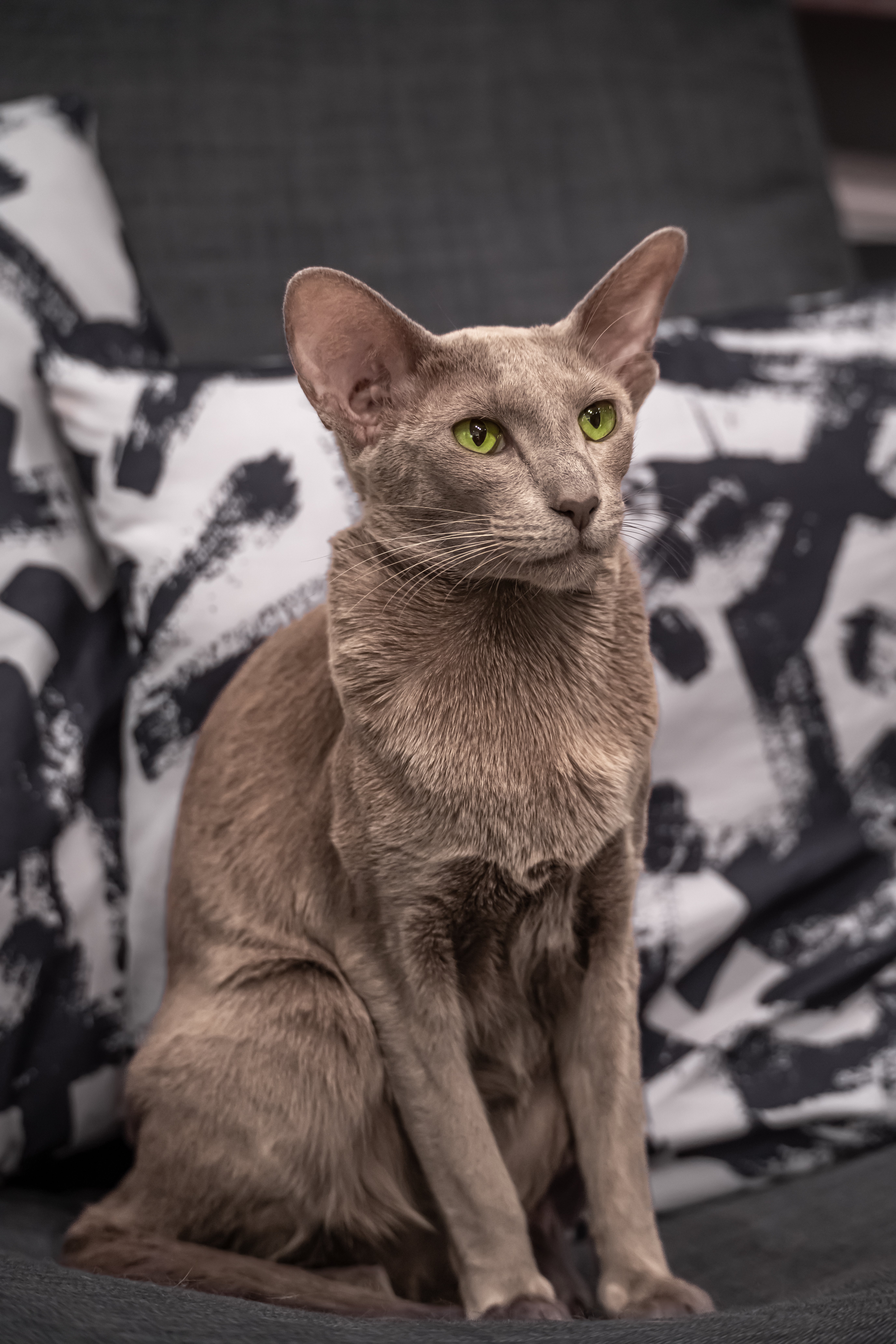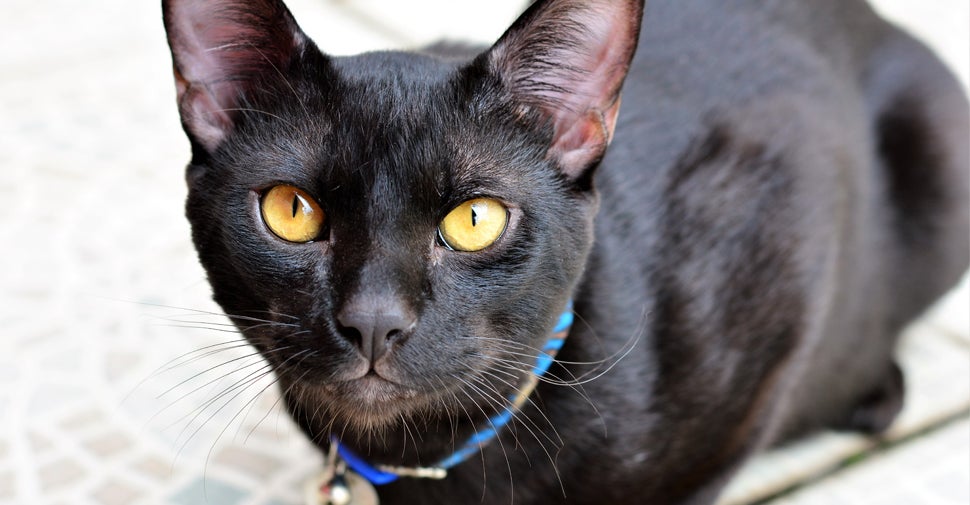Oriental Shorthair
Lithe, athletic, and bursting with personality, the Oriental Shorthair cat has a triangular-shaped head and large ears. Their eyes are curious and intelligent, hinting at their insatiable appetite for amusement and play. The coat can be any color except Siamese pointed colors, and the coat is glossy and short. They bond strongly with family members and might single out a family member as the one they’re most devoted to. They can be chaotic at times but in an endearing way.
Breed characteristics carousel
Learn More
Need to Know
- Benefits from an experienced owner
- Needs a high level of enrichment
- Highly active and inquisitive cat
- Sociable and dependent cat
- Very talkative cat
- Lean and elegant cat
- Requires frequent grooming
- Needs extensive outdoor space
- Not ideal for family homes
- Can be regularly left alone for a few hours
- Needs a calm environment

Personality
Energetic, animated, and yes, mischievous, the Oriental Shorthair cat loves the spotlight. They like nothing more than to be the center of attention and will demand owners treat them as such. They crave play and will do anything to get an owner engaged in it, including knocking things over and making their presence known. Social, loyal, and affectionate, they are sensitive and get their feelings hurt easily. They often bond strongly with one person.
After World War II, the Siamese Cat breed was almost decimated. The Oriental Shorthair cat is the result of trying to repopulate that breed. They are essentially Siamese Cats with different colors, while the Siamese Cat retains color-pointed coats. They arrived in America in the mid-20th century.
The Oriental Shorthair cat is playful and engaging and would do best with an owner who has the same attitude. They can have strong personalities, so owners should have patience and understanding as the cat can sometimes have intense behavior. They form strong bonds, so owners who are home a lot will help them with any potential behavioral problems caused by separation anxiety.
The Oriental Shorthair cat is active and playful and needs a decent amount of exercise and stimulation. However, they need to be in controlled or restricted areas such as dedicated rooms, catios, or cat runs.
The Oriental Shorthair cat loves to roam free but needs a secure area such as a catio or cat run. They are too curious for their own good and need to be in a restricted area for their own safety. Plus, they can be little cat burglars, something neighbors might not appreciate. Cat trees, platforms, gyms, and more are ideal for them to have. They like to knock things over, so keep that in mind if you have a house full of breakables.
The Oriental Shorthair cat is considered hypoallergenic. They only need quick brushings. Generally, they can take care of grooming themselves.
Smart and curious, the Oriental Shorthair cat can be trained with positive reinforcement. They can learn basic commands, clicker training, and some can even learn to leash walk.
The Oriental Shorthair cat requires a lot of attention and will do best in households that have the time to give that to them. A home with no children or older children who can help engage with the cats is best.
The cost of an Oriental Shorthair from a breeder is significantly more than the cost of adopting one from a local shelter or rescue. The adoption fee usually covers additional items such as spaying or neutering, vaccines, and microchipping.

Learn more about feeding and caring for your Oriental Shorthair on Purina.
Did You Know?
- The Oriental Shorthair cat was developed after World War II to help revive the Siamese Cat.
- Oriental Shorthairs are very vocal cats.


